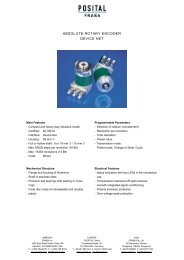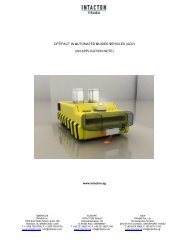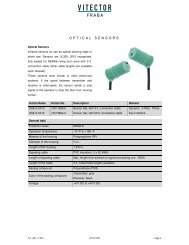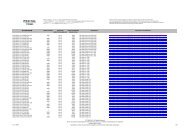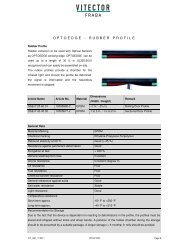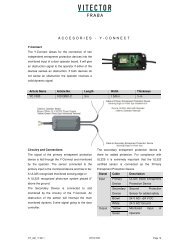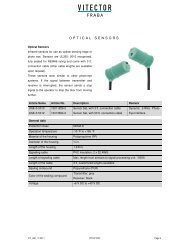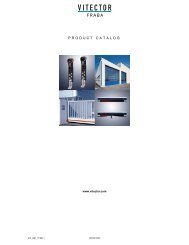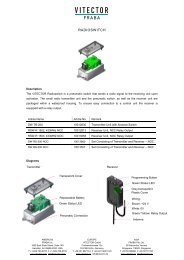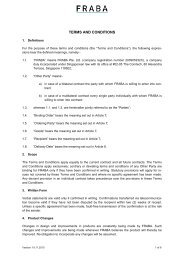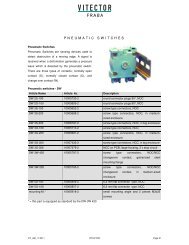Absolute Winkelcodierer OCD Powerlink
Absolute Winkelcodierer OCD Powerlink
Absolute Winkelcodierer OCD Powerlink
You also want an ePaper? Increase the reach of your titles
YUMPU automatically turns print PDFs into web optimized ePapers that Google loves.
Measurement of inlet speed<br />
SANFOR® Process – Measurement Issues<br />
Pressure<br />
Zone<br />
SANFOR® Process is the defined shrinking<br />
process in textiles and cotton before use. The<br />
initial process includes moistening the material and<br />
passing of textile into the pressure zone, where it<br />
is heated and stretched. After leaving the pressure<br />
zone, the fabric is sent through rollers to remove<br />
the moisture. This in turn, shrinks the fabric. A<br />
regulated shrinking process ensures consistent<br />
quality. This quality is determined by the inlet and<br />
outlet velocity of the textile, in and out of the pres-<br />
sure zone. The exact knowledge of these parame-<br />
ters is essential for process control.<br />
SANFOR® Process – Optical Alternative<br />
INTACTON presents the possibility of a precise<br />
non-contact optical velocity measurement without<br />
errors caused by slippage. Therefore no contami-<br />
nation or marks are left on the sensitive surface.<br />
Furthermore a two dimensional measurement can<br />
be performed. Thereby not only the velocity of feed<br />
but also elongation or deformation of the material<br />
can be detected. An over speed can be signaled<br />
by digital outputs, where the maximum speed is<br />
adjustable. Furthermore, the quality of measure-<br />
ment can be monitored by the diagnostic outputs.<br />
Thus, the shrinkage can be optimally adjusted<br />
using the accurate measurement feedback to en-<br />
sure a reproducible quality of the material.<br />
Measurement of outlet speed<br />
Textile Coating & Dyeing –Measurement Issues<br />
Textile coating and dyeing machinery often involve<br />
several textile finishing and lamination stages. In<br />
such applications the properties of the textile are<br />
changed in terms of water / chemical / light resis-<br />
tance or surface design. During the process sever-<br />
al coatings run over each other. Dimensional<br />
changes in terms of linear expansion and deforma-<br />
tion of the material require dynamic measurements<br />
to be done. The use of conventional measurement<br />
systems are unable to do so, and will lead to a loss<br />
of quality owing to measurement errors. This appli-<br />
cation in particular requires a feed speed control<br />
and a targeted re-adjustment for pre-defined<br />
process control.<br />
Textile Coating & Dyeing – Optical Alternative<br />
INTACTON’s optical motion sensors are designed<br />
for non-contact, optical, speed and length mea-<br />
surement in 2 dimensions even under varying<br />
measurement conditions. The sensors can work<br />
even under deviation of working distance and<br />
varying image rates (anything above the minimum<br />
requirement). The 2D measurement is also helpful<br />
in detecting any deformations and can enable the<br />
user to adjust the control parameters accordingly.<br />
Suffice to say. OPTIPACT and COVIDIS are con-<br />
venient solutions for speed control, length mea-<br />
surement and deformation indication in textile<br />
coating applications.<br />
Page 3 Textile Applications Version 1.0<br />
06/2011



